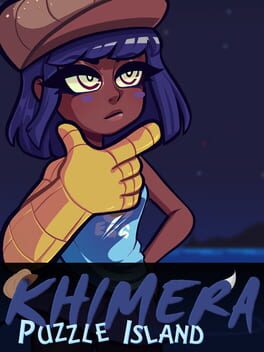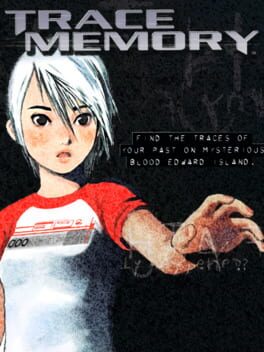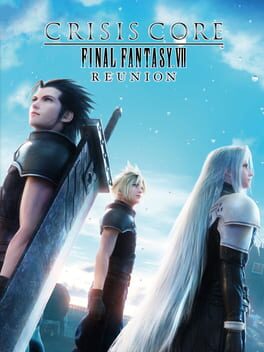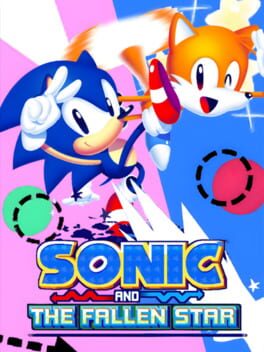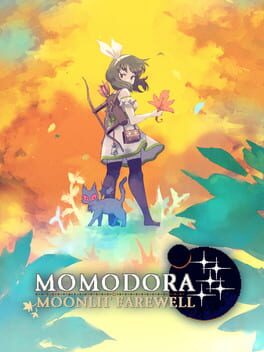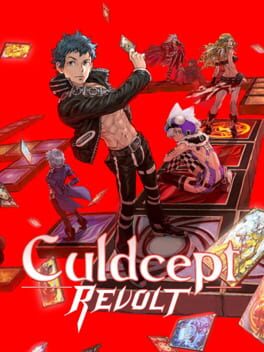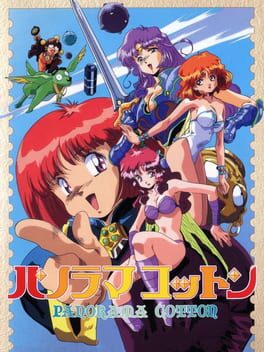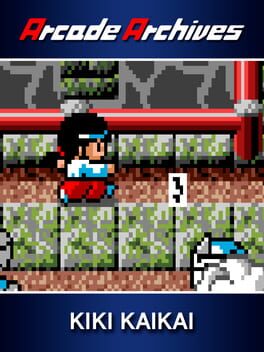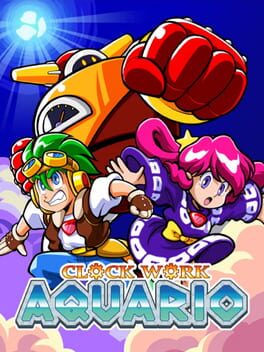RankNegativeOne
After playing the prior Khimera game a few years back, I told myself that it was good enough for a free game that I'd be down for whatever the developers did next. It's a good thing I like picross!
Altogether a decent picross implementation, but there are a few minor issues. Surrounding a group of filled-in boxes with "no" marks will at times tell you which number that group corresponds to, even if you haven't filled in enough boxes in that row or column to actually prove that you know that it corresponds to that number for sure; other versions of picross, like any nintendo version, would not give you this information. This makes it kind of a lot easier than any version I've played before, even without using any assist items (which, given the achievement and incentive structures, feel like they're meant for the Mosaic side mode instead of the "critical path").
"Pacing" also feels like an issue. With few exceptions, the sets of levels generally increase the size of the puzzles you have to solve as you progress. This means that if you progress through the puzzles in the default order, you go from puzzles that take a few seconds at the very beginning of the game, to puzzles that take about 12 minutes each, on the lower end (and I was going pretty fast with them - gold ranks on these late puzzles are something like 20 minutes each). Consequently, the end of the story kind of feels like it drags, just because the puzzles themselves are all substantially longer, with no shorter puzzles to break them up. Not a huge issue, just a thing I noticed.
Altogether a decent picross implementation, but there are a few minor issues. Surrounding a group of filled-in boxes with "no" marks will at times tell you which number that group corresponds to, even if you haven't filled in enough boxes in that row or column to actually prove that you know that it corresponds to that number for sure; other versions of picross, like any nintendo version, would not give you this information. This makes it kind of a lot easier than any version I've played before, even without using any assist items (which, given the achievement and incentive structures, feel like they're meant for the Mosaic side mode instead of the "critical path").
"Pacing" also feels like an issue. With few exceptions, the sets of levels generally increase the size of the puzzles you have to solve as you progress. This means that if you progress through the puzzles in the default order, you go from puzzles that take a few seconds at the very beginning of the game, to puzzles that take about 12 minutes each, on the lower end (and I was going pretty fast with them - gold ranks on these late puzzles are something like 20 minutes each). Consequently, the end of the story kind of feels like it drags, just because the puzzles themselves are all substantially longer, with no shorter puzzles to break them up. Not a huge issue, just a thing I noticed.
2005
Charming in many ways, but it feels like it commits many cardinal sins of the adventure game genre. If you pursue only the most basic ending, most of the puzzles seem fairly straightforward, but there aren't too many, so the game will end fairly quickly. This ending is somewhat unsatisfying though, and leaves critical questions unanswered. The "true ending" path (which isn't that much different in terms of story) requires you to investigate several key points throughout the game, sometimes in a particular order, without much guidance, or feedback letting you know if you've done anything correctly, or if you've missed something and locked yourself out of this ending. After one playthrough, I felt like a guide was required for the subsequent playthrough, to at least point me towards any "missables". Still, it's a neat exhibition of the various features of the DS, and a cool format for an adventure game like this.
Feels like a mixed bag. At the start, I was pretty gung-ho about taking on all the side content it offered, but that faded a few chapters in, and by the last few chapters, I kept telling myself to stick to the critical path.
The plot and all dialogue feel like they've been filtered through so many layers of translation, each line removed from the context of what's happening around it, but the themes have the subtlety of a hammer, so they come across okay anyway, but it's pretty grating along the way. The combat system is fine, I guess. It has the same "problem" as a lot of handheld Kingdom Hearts games (particularly Birth By Sleep and Dream Drop Distance), where the real strategy comes from building out/synthesizing your commends/materia to be broken powerful, and the actual moment-to-moment execution on the battlefield is just a formality. Character growth being so dependent on the luck of the DMW slots feels like it should be frustrating, but my odds always felt pretty decent, such that I never felt underleveled or underpowered.
The overall game structure feels almost too meaty for its own good; there's a ton of side content (to the point of there being TOO many optional missions, especially given how similar they are to each other, and how inconsistent the difficulty ratings seem to be between mission sets), but without a chapter select, so much of it is incredibly easily missed, and the game has both highly-signposted and invisible points of no return (though the invisible one seems like it just locks you out of one questline). You would think a more functional NG+ would have been a priority in the remake/remaster, but apparently not. Still, with the amount of content on offer, I can see why the original makes an appearance on basically every must-play PSP games list.
Despite any negatives, I haven't written off the idea of a second playthrough sometime in the future, and that's got to be some kind of a good sign for it. Worthwhile if you want more of the world and characters of FF7, can appreciate action RPGs that prioritize coming up with a character build over tight execution, and are willing to tolerate some very eccentric and overly-dramatic characters.
The plot and all dialogue feel like they've been filtered through so many layers of translation, each line removed from the context of what's happening around it, but the themes have the subtlety of a hammer, so they come across okay anyway, but it's pretty grating along the way. The combat system is fine, I guess. It has the same "problem" as a lot of handheld Kingdom Hearts games (particularly Birth By Sleep and Dream Drop Distance), where the real strategy comes from building out/synthesizing your commends/materia to be broken powerful, and the actual moment-to-moment execution on the battlefield is just a formality. Character growth being so dependent on the luck of the DMW slots feels like it should be frustrating, but my odds always felt pretty decent, such that I never felt underleveled or underpowered.
The overall game structure feels almost too meaty for its own good; there's a ton of side content (to the point of there being TOO many optional missions, especially given how similar they are to each other, and how inconsistent the difficulty ratings seem to be between mission sets), but without a chapter select, so much of it is incredibly easily missed, and the game has both highly-signposted and invisible points of no return (though the invisible one seems like it just locks you out of one questline). You would think a more functional NG+ would have been a priority in the remake/remaster, but apparently not. Still, with the amount of content on offer, I can see why the original makes an appearance on basically every must-play PSP games list.
Despite any negatives, I haven't written off the idea of a second playthrough sometime in the future, and that's got to be some kind of a good sign for it. Worthwhile if you want more of the world and characters of FF7, can appreciate action RPGs that prioritize coming up with a character build over tight execution, and are willing to tolerate some very eccentric and overly-dramatic characters.
It's alright. Very stylish visual design, although sometimes it's not very functional, with busy backgrounds that reuse parts you assume are meant for the foreground, so several background layers feature "fake platforms". Very nice music throughout (the "Hollie" soundtrack, that is. Didn't play with the "Hi." soundtrack selected). Level design is okay at best, but middling most of the time, with a lot of "Auto-Sonic" sections, and few inventive uses of the few gimmicks the zones feature. Still, a pretty great effort all around.
2023
Between being relatively content-light and utilizing most of the obscure features of the controller, it's weird that this wasn't a launch (or close to launch) title. A mission list like Get It Together and Gold would have gone a long way for replay value. Still very fun if you're willing to lean into the gimmick it's built around. Surprisingly responsive controls, most of the time.
Unfortunately did not have the chance to play any of the multiplayer modes, but there seem to be a lot of them.
Unfortunately did not have the chance to play any of the multiplayer modes, but there seem to be a lot of them.
I've only finished the normal difficulty first playthrough at this point. Pretty great! The sigil system gives you a reasonable amount of wiggle room to customize your build. Movement feels good without making you overpowered. Map is decently large. Without being too daunting, so once you've cleared an area of required objectives, cleaning up any remaining collectibles is pretty breezy. There are no longer bonuses for defeating bosses without taking damage, but given the larger number of bosses, and the few sigil builds that necessarily require taking damage (and how few players probably engaged with boss drops in previous games), it's an understandable removal.
1996
Towards the late middle, the levels get really lengthy and labyrinthine, to the point of sheer annoyance. Everything becomes very difficult to navigate without staring at the map the whole time. Some of the maps towards the very end are actually pretty good, with a decent feeling of setup and payoff, as late-level objectives are shown to you early, so you know which key you need or what you need to unlock in order to finish the level.
I can absolutely understand how pissed off Doom fans must have been when this WAD was suddenly made an official paid expansion, only to be... this. Without even being an expert, I know much better has been done with the engine in the time since this came out.
I can absolutely understand how pissed off Doom fans must have been when this WAD was suddenly made an official paid expansion, only to be... this. Without even being an expert, I know much better has been done with the engine in the time since this came out.
2020
I have very few complaints. Movement is fun with the titular kunai grappling hooks, the stylized look suits the game well. I did encounter one glitch that left me unable to progress in a late game area, but quitting and reloading fixed it, and the checkpointing was really generous at that point in the game. On that note, the checkpoints feel somewhat arbitrary in their placement at times. They appear very frequently, but oftentimes you'll encounter a platforming segment over instant-death hazards, and the nearest checkpoint is several twisting (but themselves unchallenging) corridors away, so any time you miss a jump on that particular gauntlet, you have to make a sort of tedious trek back to it. This isn't frequent, and the platforming challenges in question aren't really insurmountable, but it happened often enough to nearly discourage me from continuing.
Also, the dialogue and visual gags include a lot of dated (or very soon to be dated) meme humor, more worthy of an eyeroll than a laugh.
Other than those, all around decent.
Also, the dialogue and visual gags include a lot of dated (or very soon to be dated) meme humor, more worthy of an eyeroll than a laugh.
Other than those, all around decent.
2016
(Played up to credits roll, though I know there's "post-game" that's plot relevant beyond that)
While I like the concept, and feel it's probably one of the better monopoly-likes I've played (though, that's pretty much just this and Monopoly), so much by necessity relies on luck that it can feel infuriating when a bad dice roll, or an opponent slightly smarter than you expected them to be absolutely screws you over, and rolls back upwards from 20 minutes of gameplay. Ultimately, success and failure seem to really be made in the deckbuilding, and strategy you work with from the beginning of a match, as opposed to any turning point decisions you can make throughout the match. I found that the best option, as soon as it was available, was to place Kelpie or Old Willow (depending on the deck color I was focusing on, since a long chain of the corresponding color increases the efficacy of the strategy) at a space that the opponents MUST pass to complete a lap, and make sure that space gets highly upgraded. Often, this involves placing a different unit on that space first, upgrading it, then later exchanging the intended unit onto the square. Unfortunately, the nature of this game means that you can't repeatedly interact with a unit placed on a space, so you need to run at least a few laps around the board to get this strategy going, and if anything goes wrong along the way, you could be screwed, so it's not really a perfect strategy by any means.
All that is to say: it seems like the player needs just a few more options to feel like success or failure is really something in your control, and not hinged largely on grinding out attempts until luck is on your side.
While I like the concept, and feel it's probably one of the better monopoly-likes I've played (though, that's pretty much just this and Monopoly), so much by necessity relies on luck that it can feel infuriating when a bad dice roll, or an opponent slightly smarter than you expected them to be absolutely screws you over, and rolls back upwards from 20 minutes of gameplay. Ultimately, success and failure seem to really be made in the deckbuilding, and strategy you work with from the beginning of a match, as opposed to any turning point decisions you can make throughout the match. I found that the best option, as soon as it was available, was to place Kelpie or Old Willow (depending on the deck color I was focusing on, since a long chain of the corresponding color increases the efficacy of the strategy) at a space that the opponents MUST pass to complete a lap, and make sure that space gets highly upgraded. Often, this involves placing a different unit on that space first, upgrading it, then later exchanging the intended unit onto the square. Unfortunately, the nature of this game means that you can't repeatedly interact with a unit placed on a space, so you need to run at least a few laps around the board to get this strategy going, and if anything goes wrong along the way, you could be screwed, so it's not really a perfect strategy by any means.
All that is to say: it seems like the player needs just a few more options to feel like success or failure is really something in your control, and not hinged largely on grinding out attempts until luck is on your side.
In a word, delightful. Every stage has some kind of gimmick to it, and it doesn't quite so transparently feel like it follows the "introduce, iterate, test" structure that became so familiar in some of the NSMB games and Retro Studios DKC games (though it probably does follow that structure, it's just not so obvious about it). What maybe hasn't been said enough yet is that the online features let you cheese out difficult sections in stages like one might be able to if they were playing with local multiplayer, even if they're playing alone. That's kinda neat, though it does feel a bit cheap, at times, so it's a good thing it's opt-in.
2019
1994
A lot of fun. The 3d perspective is pretty neat for the time, but it does get pretty confusing as to where things actually are in space, and your character blocks a lot of your view. Enemies can also come at you from behind, so there's a lot of a memorization element to some levels. Can get pretty tiring to look at after not very long; you're probably best off grabbing one of the modern versions that comes with save states, even if you just use that to take a break after a few stages.
2021
I think it's really cool that the developers were able to piece together this collection of archival work and what work had already been done and finish making the game. Unfortunately, I can absolutely see why it was canned at the time. It's fine, I guess, but some of the sequences feel like total BS (those rolling enemies when you're going uphill on the rainbow, the crab boss, the tedious nature of the final boss if you can't guess the right direction to throw the bombs to get some extra hits in), and sometimes the collision system has you getting hit when you could SWEAR you were landing on an enemy, not bumping into them from the side. If it goes on steep discount again, it might be worth picking up, but I don't think I'll be revisiting it any time soon.
Played in single player mode.
Played in single player mode.
